Arm Lift in Guatemala
Search and Compare the Best Clinics and Doctors at the Lowest Prices for Arm Lift in Guatemala
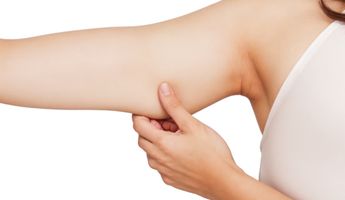
Find the best clinics for Arm Lift in Guatemala
No clinics available
Thailand offers the best prices Worldwide
Price: $ 26

- Home
- Guatemala
Compare Before & After Photos of _procedure_photos.phpArm Lift


Full-side view
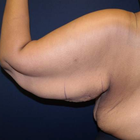
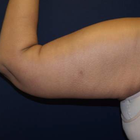
Full-side view
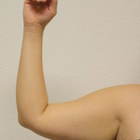
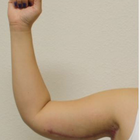
Full-side view
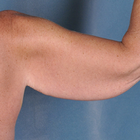
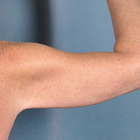
Full-side view

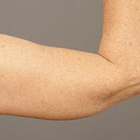
Full-side view

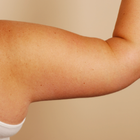
Full-side view
WHY US?
At Medijump, we're making medical easy. You can search, compare, discuss, and book your medical all in one place. We open the door to the best medical providers worldwide, saving you time and energy along the way, and it's all for FREE, no hidden fees, and no price markups guaranteed. So what are you waiting for?

Free

Best Price

Widest Selection

Risk-Free
What you need to know about Arm Lift in Guatemala
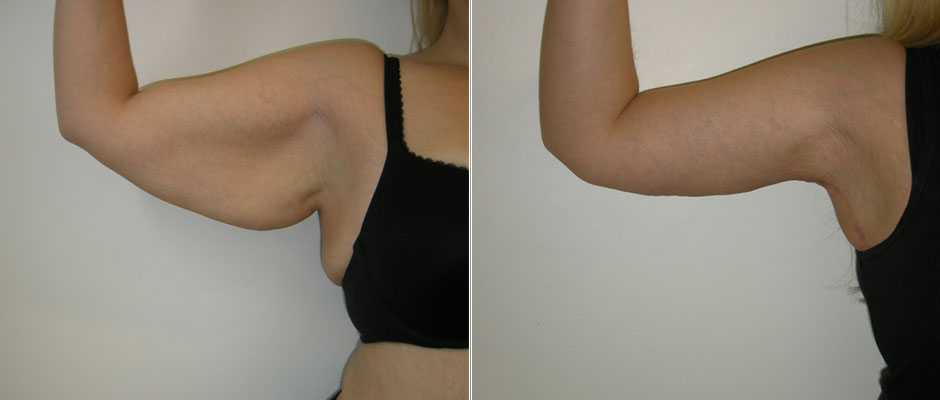
An arm lift, also known as a Brachioplasty, is a cosmetic surgery to treat sagging underarms and the connecting area of the chest wall. The surgery improves the appearance of the under portion of a person’s upper arm. It reduces extra skin, removes excess fat, tightens and smooths the underlying tissue that defines the shape of the upper arm. The surgery can make your upper arms look more defined and toned.
As you get older, your skin changes and becomes loose, particularly the skin on your upper arms. Genetics and significant weight loss also play a role in the development of drooping upper arms. While exercise can strengthen the muscle tone in your upper arm, it cannot correct excess skin that has lost its elasticity.
You might consider this procedure if the undersides of your upper arm appear loose or sagging due to excess skin and fat. Since it can improve your appearance, many people who had the procedure found that it boosted their body image.
In general, good candidates for an arm lift surgery are individuals with significant upper arm skin laxity, individuals who are not significantly overweight, and healthy individuals without medical conditions, as it can increase the risk of surgery.
What is the cost of undergoing the Arm Lift in Guatemala?
The cost of an Arm Lift varies depending on multiple factors. These include the surgeon's fees, which can vary significantly based on the surgeon's experience and geographical location, the cost of the anesthesia, the clinical facility's charges, and any additional expenses such as lab tests and post-surgery garments.
Insurance usually does not cover the cost of an Arm Lift, as it's considered a cosmetic procedure. However, many surgeons offer patient financing plans to make the procedure more affordable. As prospective patients approach this decision, it's vital to remember that the surgeon's experience and your comfort should always take precedence over cost.
How Long Should I Stay in Guatemala for a Arm Lift Procedure?
The length of stay following the arm lifts in Guatemala varies from patient to patient. Some individuals might need one to two nights of hospital stay, especially if the procedure was extensive or if the individual has other chronic health conditions that need monitoring. However, in many cases, individuals will be discharged on the same day when the surgical procedure is completed, contingent on the recovery from anesthesia and initial post-operative stability. It's important that the individual has a support system in place to assist during the first few days. Typically, persons getting an arm lift should expect to stay in the region for a week to two weeks for the initial recovery and follow-up. A longer stay might be necessary if there are complications.
What's the Recovery Time for Arm Lift Procedures in Guatemala?
The recovery period of an arm lift is typically short as long as you follow your surgeon’s postoperative care instruction. You may be able to return to work and resume some light activities within two weeks, and you should be able to return to your normal daily routine in six weeks. The surgeon may get you to wear a compression sleeve for a few weeks to keep your swelling down. However, allow six months before doing any strenuous and athletic activities, such as sport, because it might stretch the incision. The healing time for your swelling may take two to three months. Contact your doctor immediately if you experience shortness of breaths, irregular heartbeat, chest pains, a fever, or redness of the skin.
What does a Arm Lift Procedure Involve?
Before the actual procedure, your plastic surgeon will likely review your medical history and ask you about any medications you are taking or have taken recently. You may be required to do a physical exam to determine the treatment options, a chest X-ray, and an electrocardiogram. You can also discuss your expectations in terms of appearance post-surgery. During this discussion and evaluation, be sure to ask your surgeon questions and tell them your concerns because it is very important to understand all aspects of an arm lift procedure, such as the benefits and risks. If you smoke, your surgeon will ask you to stop around one or two months before the surgery to reduce the risk of complications.
The surgery can be performed in a hospital or an outpatient surgical facility. Your surgeon will start by marking on the underside of your arms where they plan to make incisions. The incision length depends on the amount of excess skin to be removed and generally placed on the inside or the back of the arm. Then, you are given either general or local anesthesia. Your surgeon will recommend the best choice for you.
Guided by the marks on your arms, your surgeon tightens and reshapes the tissue in your upper arms. Then they pulls your skin back over the tissue and secures it with stitches. If you have any excess fat in the area, suction technique (liposuction) may also be used to remove the fat. Finally, your skin is smoothed over the new contours and excess skin is removed. The whole procedure normally takes two to three hours to finish.
What sort of Aftercare is Required for Arm Lift Procedures in Guatemala?
Your surgeon will give you aftercare instructions, which will cover what medications to take and when, how to take care of your wounds, warning signs, and a timeline for follow up appointments. It is important to strictly follow your surgeon’s aftercare instructions. Your surgeon may prescribe painkillers and to prevent wound infections you may need to take oral antibiotics or topical medications. While recovering, it is essential to avoid smoking because smoking slows down the healing process and will increase your risk of infections and permanent scarring. To maintain the result of arm lift surgery, you will need to maintain a stable weight and general fitness.
What's the Success Rate of Arm Lift Procedures in Guatemala?
The success rate of a Arm Lift, such as an arm lift, hinges on factors like the patient's overall health, weight stability post-procedure, and the surgeon's expertise. Ensuring the procedure is performed by a board-certified plastic surgeon can dramatically optimize outcomes. Patient satisfaction post Arm Lift is typically high, with most studies showcasing rates between 80 to 90 percent. This high success rate is often attributed to improved arm contour, enhanced comfort during physical activities, and boosted self-esteem.
However, success is invariably subjective and varies amongst individuals, so it's critical to set realistic expectations whilst bearing in mind that the aim is enhancement, not perfection. Moreover, the occurrence of complications post arm lift procedures is relatively scarce, particularly when under the experienced hands of a renowned surgeon.When the Arm Lift is performed as part of overall body contouring after significant weight loss, the success rates and patient satisfaction tends to be even higher. This is supported by enhanced quality of life experienced by the patients, resultant of simplified daily routines and renewed self-confidence. Overall, the success of an arm lift procedure extends beyond just physical transformation, contributing largely to the individual's psychological well-being.
Are there Alternatives to Arm Lift Procedures in Guatemala?
If you prefer less invasive procedures, some alternative procedures can be used instead of arm lift surgery.
- Laser Skin Tightening is perfect for those with mild to moderate skin laxity. Your upper arms will be treated with a high-power surgical laser that can stimulate collagen production in your skin. It involves no scarring, no downtime, and almost no uncomfortable feelings. Nevertheless, the results appear gradually and are not as effective as an arm lift. You might need to undergo multiple treatments before you get to your desired result.
- Mesotherapy is used to melt fat and tighten skin. A solution containing amino acids, medication, and natural ingredients will be injected into the middle layer of your skin. The effects will be visible after four to eight weeks and it may not be effective if you have a lot of excess skin.
Other alternatives are Vaser liposuction, Lipodissolve, Thermage, and massage therapy.
What Are the Risks and Complications of the Arm Lift?
Like any surgical procedure, an Arm Lift also carries some inherent risks. Some common complications include infections, seromas (pockets of fluid), hematoma (blood accumulating under the skin), and unfavorable scarring. Other risks involve changes in skin sensation, adverse reactions to anesthesia, and dissatisfaction with the overall aesthetic outcome. In some rare cases, blood clots can form which can be a serious health hazard. However, these risks are typically minimized in a well-equipped surgical setting and under the care of a board-certified cosmetic surgeon.
What are the preparatory steps required before undergoing the Arm Lift in Guatemala?
Before undergoing Arm Lift procedure in Guatemala, thorough preparation is necessary to ensure a smoother process and optimal results. Most clinics require pre-assessment consultations to study your medical history and assess your overall health condition. The healthcare provider may conduct some tests, including blood tests or diagnostic imaging, to rule out any unseen conditions. It's crucial for patients to inform about any current medical conditions, allergies, or any medications or supplements they're currently taking.
Smoking and excessive alcohol intake can interfere with the healing process and result in complications after surgery. Therefore, patients may need to abstain from smoking and limit alcohol consumption for a certain period before and after the procedure. It's also advisable to maintain a stable weight and healthy nutritional habits prior to the surgery. On the day of the operation, most clinics suggest that patients come in comfortable, loose clothing.
Whilst the information presented here has been accurately sourced and verified by a medical professional for its accuracy, it is still advised to consult with your doctor before pursuing a medical treatment at one of the listed medical providers
No Time?
Tell us what you're looking for and we'll reachout to the top clinics all at once
Enquire Now

Popular Procedures in Guatemala
Prices Start From $20

Prices Start From $85

Prices Start From $167

Prices Start From $120

Prices Start From $931

Prices Start From $76

Prices Start From $236

Recommended Medical Centers in Guatemala for procedures similar to Arm Lift

- Interpreter services
- Translation service
- Religious facilities
- Medical records transfer
- Medical travel insurance
- Health insurance coordination
- TV in the room
- Safe in the room
- Phone in the room
- Private rooms for patients available

- Interpreter services
- Translation service
- Religious facilities
- Medical records transfer
- Medical travel insurance
- Health insurance coordination
- TV in the room
- Safe in the room
- Phone in the room
- Private rooms for patients available

- Interpreter services
- Translation service
- Religious facilities
- Medical records transfer
- Medical travel insurance
- Health insurance coordination
- TV in the room
- Safe in the room
- Phone in the room
- Private rooms for patients available

- Interpreter services
- Translation service
- Religious facilities
- Medical records transfer
- Medical travel insurance
- Health insurance coordination
- TV in the room
- Safe in the room
- Phone in the room
- Private rooms for patients available
Arm Lift in and around Guatemala
Introduction
Guatemala is a country in Central America and its territory was once the core of the Maya Civilization. There are numerous historical sites to explore in this country, from Tikal National Park where visitors can learn more about the Maya to the colonial city of Antigua, which is one of the many footprints the Spanish left behind. However, there are other charms as well, such as the many amazing volcanoes, lakes, jungles, and inexpensive food markets. Besides its natural beauty and ancient ruins, Guatemala is also popular among international tourists for its medical tourism. Foreign patients who are looking for a more cost-effective solution for their medical requirements choose Guatemala because the country offers the finest quality healthcare at reasonable rates. On average, medical procedures in this country are 50 to 75% less expensive than in the US. Furthermore, the standard and quality of the hospitals and clinics in this country are on par with those in the USA.
Popular Cities and Regions in Guatemala
The most popular city in Guatemala is Antigua, which was the capital of Guatemala. Located in the central highlands of the country, between three volcanoes, this city is mainly known for its preserved Spanish Baroque-influenced architecture. From its churches, houses, ruins, parks, to its cobbled streets, the city will never cease to captivate visitors. Visit the Plaza Mayor (central square) to admire its awesome palaces, cathedral, and gardens. While most travelers used to skip Guatemala City, the capital of the country, more and more travelers are coming to the city as it reinvents itself as a safe and interesting destination to visit. Another popular city is Panajachel, which is the gateway to the striking Lago de Atitlán.
Transport in Guatemala
The primary airport in Guatemala is La Aurora International Airport, which operates international flights to and from several cities in North and Central America, such as Los Angeles, New York, Mexico City, and San Salvador. Low-cost airlines, including JetBlue and Volaris, serve flights from this airport. The most common way to travel around the country is by pull man (first-class buses+, rental cars, and “chicken bus” (second-class buses). To travel inside cities and towns, taxis and three-wheeled Thai tuk-tuks are widely available.
Visas in Guatemala
Holders of passports of 86 countries, including all EU countries, the US, and the UK, are allowed to visit Guatemala for up to 90 days. Other nationals, including China and Nepal, need to apply for a visa to be able to visit the country.
Weather in Guatemala
Guatemala has two seasons. The rainy season stretches from May through October, with the majority of rain falling between September and October. The dry season extends from November to April, characterized by clear, blue skies. Note that coastal areas can be very humid.
Additional Info
- Local Currency: The official currency is Quetzal (GTQ). 1 USD is approx. 7.6 GTQ.
- Money & Payments: ATMs are widely available. Credit Cards are accepted in most midrange and high-end restaurants and hostels. Tipping is usually expected except by taxi drivers.
- Local Language: Spanish is the official language spoken by 93% of the population. Very few locals speak English. The only places where you can find English speakers are in tourist areas.
- Local Culture and Religion: The culture of the country reflects strong Mayan and Spanish influences. Guatemala has the freedom of religion, but Christianity is the predominant religion.
- Public Holidays: Guatemala celebrates several public holidays, including (but not limited to) New Year’s Day, Labor Day, Army Day, Independence Day, Revolution Day, and Christmas Day.
Popular Searches
- Plastic Surgery in Thailand
- Dental Implants in Thailand
- Hair Transplant in Thailand
- Breast Augmentation Thailand
- Gastric Sleeve in Thailand
- Gender Reassignment Surgery in Thailand
- Laser Hair Removal in Bangkok
- Botox in Bangkok
- Dermatology in Bangkok
- Breast Augmentation in Bangkok
- Coolsculpting in Bangkok
- Veneers in Turkey
- Hair Transplant in Turkey
- Rhinoplasty in Turkey
- Stem Cell Therapy in Mexico
- Rhinoplasty in Mexico
- Liposuction in Mexico
- Coolsculpting in Tijuana
- Rhinoplasty in Korea
- Scar Removal in Korea
- Gastric Sleeve in Turkey
- Bone Marrow Transplant in India
- Invisalign in Malaysia
- Plastic Surgery in the Dominican Republic
- Tummy Tuck in the Dominican Republic
- Plastic and Cosmetic Surgery in Poland
- Rhinoplasty in Poland
- Hair Implant in Poland
- Dental Implants in Poland
- IVF in Turkey